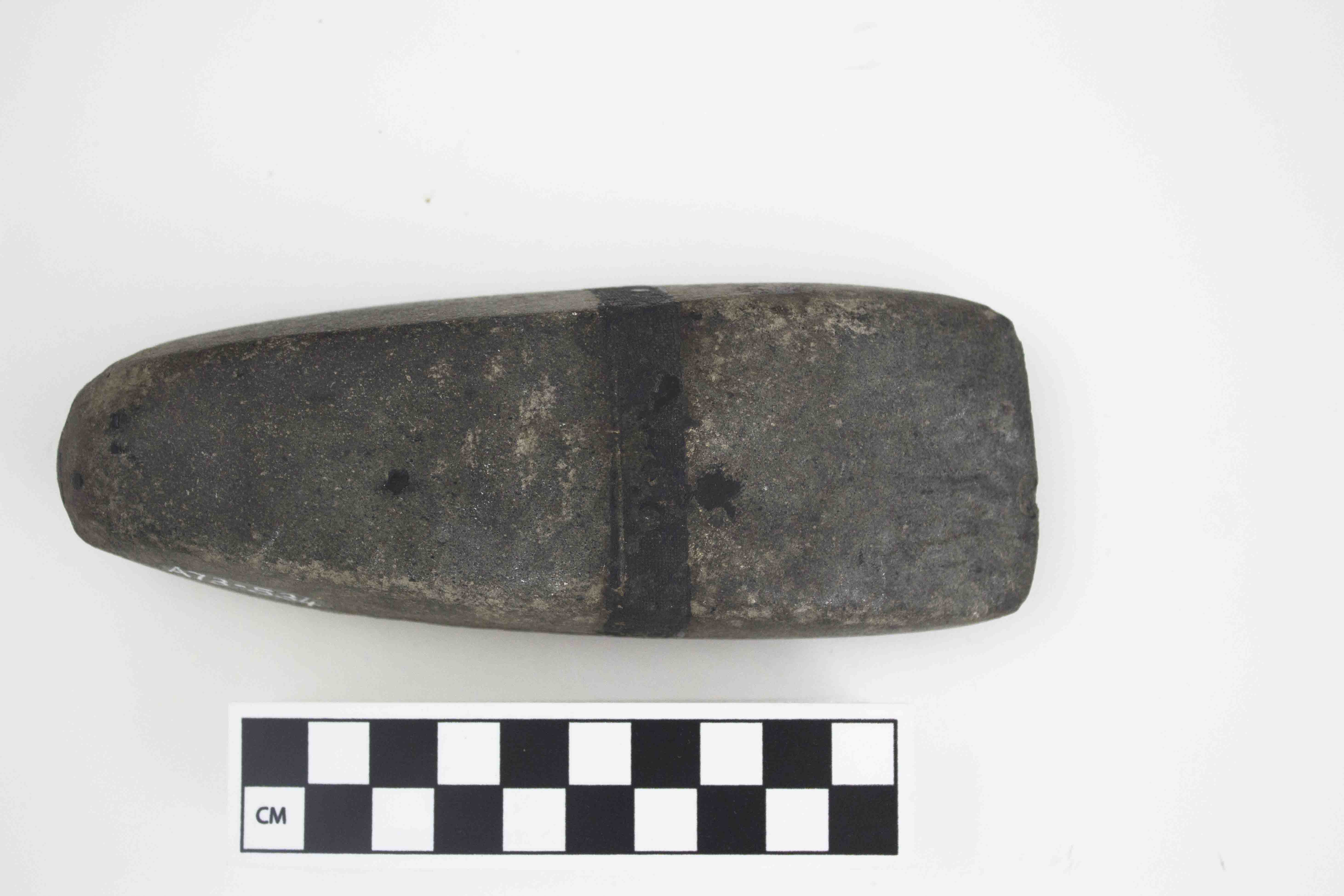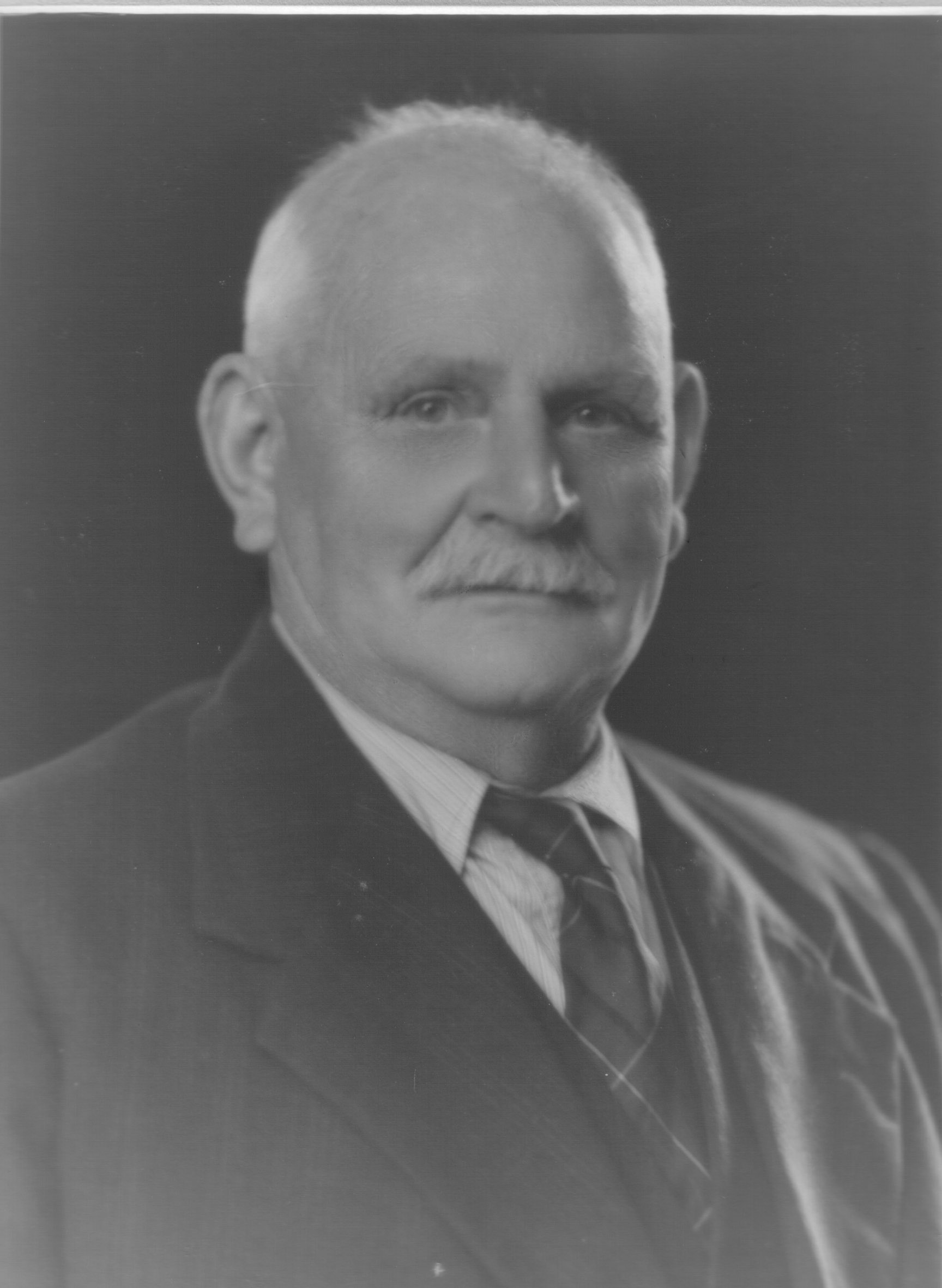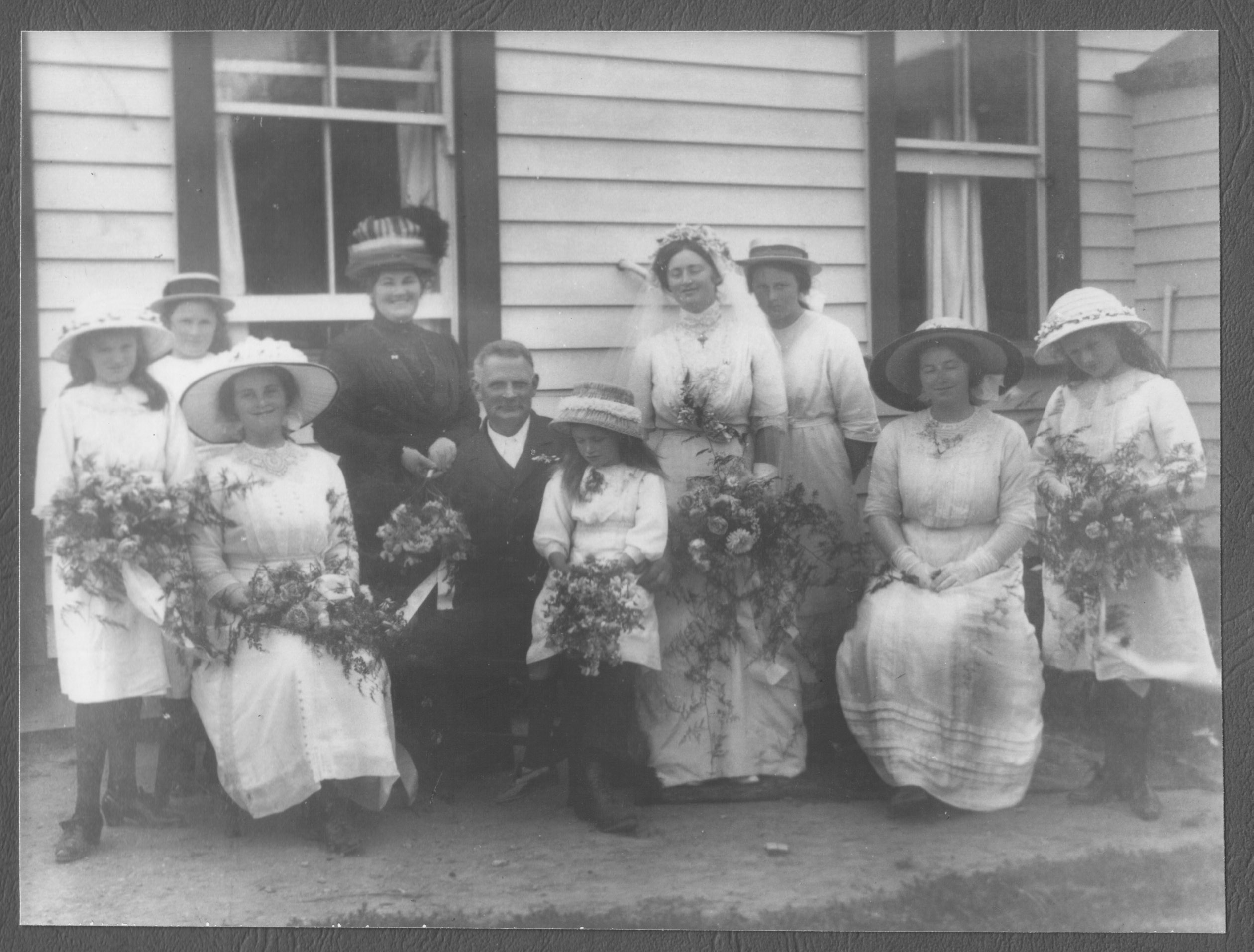






In the early part of the 20th Century, James John Patterson milked Taranaki's dairy industry for all it was worth. The man more commonly known as JJ Patterson embraced the idea of sharemilking wholeheartedly and gave many Taranaki families the kick-start they needed to buy their own farms.
In 1901, the same time the Boer War was raging in South Africa, JJ moved into dairy farming. Prior to this he had been raising sheep on a Normanby Road farm in south Taranaki. As soon as he switched to cows, he advertised for sharemilkers, providing the chosen ones with the land, a farmhouse, dairy herd and milking shed.
The agreement was that JJ got 60% of farm income and the sharemilker kept 40%. This ratio changed to 61% (owner) and 39% (sharemilker) during the depression years of the 1920s and 1930s. The canny businessman, who was renowned for his own hard work, knew the percentage deal would be a powerful incentive for employees.
And it worked. It was believed JJ had the largest dairy farming operation in Australasia – if not the world. By the 1930s, he employed more than 30 sharemilkers in the Taranaki and Waikato districts and owned about 4000 dairy cattle.
Hāwera farmer Bryce Williams, who was one of JJ's relatives, says: "He was a self-made man, an entirely just man. He took longer than most men to consider a proposition on a deal in stock or property, but once he had given his word, that became his bond."
Granddaughter Bryan Bartley says workers stayed with him for years. "Whenever he advertised for new sharemilkers, he would get dozens of replies. He was known as a good boss." Bryan, who lives in Auckland, is the daughter of Dorothy, the second eldest of the eight Patterson girls.
JJ and wife Catherine (always known as Kate) made sure the girls all received a good education and most attended Whanganui Girls' College and several studied at university. This stemmed from Kate being a teacher before she married and from JJ's disappointment that he was forced to leave school when he was just eight years old.
JJ's life began brightly, with his father George being a successful and wealthy engineer in New Plymouth. George's first wife, Elizabeth, died of tuberculosis in 1854, leaving him a daughter with the same name.
He then returned to England to find another wife, a woman called Susannah Hewitt, and brought her back to New Zealand. They married in 1855, and then had six children in quick succession. Twins George and Susan (Susie) were born in May 1857, the first John James in October 1858 (he died four days after he was born), the second JJ (and the hero of this story) was born in October 1859. In November 1861, twins Robert Henry and Thomas William were born, but Thomas died in February 1862. The following year, Susannah became pregnant again. Sadly, George was never to see his last-born child.
The 1860s were turbulent times in Taranaki and the Patterson’s had been hit hard. George's Frankley Road sawmill and the family home had been torched by Māori some time during the first land war, which began at Waitara on 17 March 1860.
Like many of the settler families, the Patterson’s had moved from the countryside of Taranaki to the relative safety of central New Plymouth. Others found sanctuary in the South Island town of Nelson.
On 28 February 1864, a beautiful summer Sunday, George decided to ride out to check on the Frankley Road property. Behind him on foot were four young settlers. Suddenly, George stopped his horse and put up a hand for the others to halt. They did and the horseman cautiously continued. As he rode forward, a group of Māori warriors crept quietly out of bush by the side of the road between George and the four settlers. In fear, the quartet scorched off towards town. George also turned, but didn't get far. He was shot three times and bashed in the head by what the colonial surgeon would later describe as a tomahawk.
Two months later, on 28 April, the grieving widow gave birth to Henrietta Rose Patterson (always called Rose). Seven months later, on Christmas Eve, Susannah died of typhus, leaving the children orphans.
A childless couple called William and Elizabeth Burton, who met George in 1852 aboard the settler ship, Katherine Stewart Forbes, became foster parents to the Patterson children. The also had control of the extensive Patterson estate, which included £1800 given by the government as compensation for the torched sawmill.
By all accounts the Burtons were unkind to the youngsters. Robert, who was apt to wet his bed, was sent to school with a sign around his neck saying “This is the boy who wets his bed”. One of the girls, possibly Susie, walked around with her head down, so the Burtons tied a piece of gorse under her chin to improve her posture. At six, JJ was made to sleep alone in one of the empty Patterson houses. This was part of an insurance policy, which required that to be covered, a home had to be slept in at least once a month.
When he was nine, JJ asked to go to sea, and the Burtons allowed him to join a ship called the Lizzie. The 19-ton vessel worked much of New Zealand's west coast, pounding through wild seas. After a short journey, the young lad decided he was no sailor. When the Lizzie pulled into Opunake, JJ jumped ship and walked by himself all the way back to New Plymouth.
Later in his life he described that adventure as a “pretty rough and rigorous time and the experience effectually cured me of my desire to go to sea”.
At 14 or 15, he was apprenticed to Devon Street blacksmith James Mitchell Vivian. At the same time, JJ's brother, George, became an apprentice saddler.
In the meantime, the Burtons decided to return to England, taking Elizabeth, Susie, Rose and perhaps Robert with them. The idea was for the foster parents to find more settlers for the colony, while the Patterson siblings received further education. JJ never got over being abandoned and was always embarrassed by his lack of education. He had always dreamed of becoming an engineer like his father.
After he finished his apprenticeship, JJ moved south to Pātea. There he worked for William Williams, who owned a family blacksmith business. The man from Wales, who spoke his native Welsh, a lilting English and was fluent in Māori, treated JJ like a son. His wife did not. In fact, she became a thorn in his side for many years.
When JJ was 20, he met the Williams' daughter Catherine (then 17) and she won his heart. A six-year-long, on-and-off romance followed that first encounter, with many letters exchanged and a ring sent and returned. The problem was Kate's mother, who decided JJ was not good enough for her girl. Here are excerpts from some of JJ's letters to Kate:
“Manaia, 5 May 1887
Dear Kitty,
I was very pleased to receive a letter from you although it is not quite what I could wish, it is far better than I expected. As you say when I left you, I was under the impression that you cared for me no more than you did for any other member of the (shall I say great unwashed). I have read your epistle at least once a day since I received it with the exception of Sunday and then I perused it twice. I am sure I see no real reason why I should not return you the ring if you are willing..."
The letter also makes reference to JJ's difficulty with Kate's mother: "Remember water will wear away the hardest stone in time."
“Manaia, 15, November, 1887
...and now Katie to conclude this letter, I must inform you that I have the much abused ring still in my possession and I do not think it will fit anyone's finger but yours."
“Manaia 5, December 1887
...What on earth can I do to gain your mother's approval? Has she any knitting needles that want sharpening or would a present of a fat gander for Xmas dinner appease her. I have one that is the pride of my poultry yard (a thing of beauty and joy for the time being), but if it will raise me one per cent in her estimation, he shall be sacrificed."
Love and perseverance on the young suitor's part finally won through and Kate Williams' parents agreed to the marriage. This is a paragraph from one of his last letters to Kate, before their wedding.
“Manaia, 1888
... with reference to the suit I am to get. I got measured some time since by a tailor from Auckland. As luck will have it, the coat has only one row of buttons, but I fancy it is a light tweed instead of dark. Whether it fits or not, I cannot say, but you may rest assured that it will hang on during the ceremony unless we have a very rough time of it..."
James John Patterson (by then 28) and his beloved Kate (25) finally wed on 18 September 1888. There are no records of his suit falling apart!
By then, JJ had his own blacksmith business in Manaia and a house in the town for his bride. He also had a cottage in Pātea.
The following years were wonderful for the huge man, who was believed to be about 6-feet, 4-inches (1.9 metres) tall. For the first time, probably since before his parents died, JJ was being looked after properly. He had love, good food, and a growing family, with Kate having baby after baby. Sadly, the second child was a boy who was born dead.
Their daughters all flourished. In order, the Patterson girls were Amy (1889-1961), Dorothy (1894-1978), Constance (1895-1971), Hazel (1896-1969), Vivien (1898-1989), Edith (1900-1972), Rose (1901-1982) and Katherine (1905-1981).
JJ's business interests were also developing, especially his sharemilking operations. Great-granddaughter Anna Wilding, who has been researching and writing JJ's life for a planned movie, says he had an amazing eye for cattle. "If he walked past cattle two years later [after selling it], he could tell you what herd it was from and when it was sold. He also had an eye for workable land." And, it seems, reliable men. "He chose the hardest workers in the town" Anna says.
Many of his workers were Māori. One of his former sharemilkers, Bill Dakers, who helped JJ extend his dairy farming operations into the Waikato, wrote these memories of his employer: “Some of the leases were held very insecurely, just by word of mouth between him and the natives but it seemed to work out very well … I mentioned once to him, that, seeing his father had been massacred by them, it was a wonder he was so kindly disposed toward them. He had a quiet sense of humour and said that perhaps that was one of his reasons for liking them, they may have had some of his father's blood in them.”
In fact, it appears JJ and Kate embraced Māori culture. Bryan Bartley remembers that when she was a girl, her grandfather would visit her family in north Taranaki on his way to and from the Waikato property. "There was a cemetery between Awakino and Mōkau and he took us up there to see the Tainui anchor stone. I remember that very clearly" she says. "He used to make things out of flax – he could do that kind of thing."
Another granddaughter, Dorothy Gould, has similar comments: "He loved reading Māori history and always had a song for his grandchildren whom he put on his knee." Kate may have played a part in her husband's feelings towards things Māori, because of her own father's fluency in the language.
JJ and Kate's house on Winks Road, Manaia, was even called Whare Moana (House by the Sea). The entrance hall of the house had Māori cloaks, mats on the walls and some cabinets full of artefacts. "After grandfather died the collection was taken to the Taranaki Museum by two grandsons" Bryan Bartley says.
But it was his beloved Kate who went first. When she was aged in her 60s, the Patterson matriarch suffered a number of strokes and was confined to bed for the last two years of her life. She was cared for by her daughters, and finally died of pneumonia on 28 November 1929. She was 66.
Māori friends, Mr and Mrs George Morgan, of Manaia, sent one of the most touching letters to the family. It read: “I and my family join you and your family to mourn the loss of your wife, who was like a mother to all Māori, which I will take back to the old days. Dated back when I used to go to Parihaka. Why she was such a noble woman who was always ready to help all she could, for others…”
The end came suddenly for JJ. He had been out mending gate locks on 28 July 1937 when he felt a pain around his heart. The doctor came, pronounced influenza and told his daughters to make sure it didn't turn into pneumonia. He had been in bed for ten days when, about 2am on 6 August, he sat up in bed and called out: "It's only a sore throat. You girls can't keep me in bed any longer." Those were JJ Patterson's last words. He fell back and died shortly after.
The whole community mourned the loss of JJ and his funeral was a massive affair. A newspaper report of the event said more than 100 cars formed the cortege and an extra car was needed to carry flowers sent from all over New Zealand. “The casket was draped with a Māori mat, a tribute from Mr Patterson's native friends” the newspaper said.
Among the pallbearers was Rangi Rei, who was one of JJ's friends and a loyal employee. "Rangi Rei was given grandfather's dog" Bryan Bartley says.
JJ's funeral service was held in the dining room of Whare Moana and then on to the Manaia Cemetery. At his graveside on that bitterly cold August day, the Reverend H. Cottom likened JJ's life to a line from a popular hymn of the time, "Toil on and in thy toil rejoice …"
This aptly reflects JJ's work ethics, as do many accounts of his life, including one from Dorothy Gould: "He was a busy man who went about his own business – never drank or smoked or swore but had great strength and would turn his hands to almost anything, from unloading railway trucks to harvesting his own hay let alone attending to all his own book work [after Kate had her strokes]."
A book about his life, published in 1990, is called In Thy Toil Rejoice.
Pickmere, A. (1990). In Thy Toil Rejoice: The Story of JJ Patterson, Taranaki Pioneer. Auckland: Bartley and Pickmere
Puke Ariki Heritage Collection: Patterson collection
LinkPlease do not reproduce these images without permission from Puke Ariki.
Contact us for more information or you can order images online here.